*This page may include affiliate links, which means that if you make a purchase through one of the product links, we may receive a small commission. For full affiliate disclosure please see our disclaimer page.
When we think of pampering our dogs, a luxurious bath or a playful day at the park often comes to mind. But did you know that one of the most crucial aspects of ensuring their comfort might be lying at the tips of their paws? Yes, I’m talking about their nails. Many of us might overlook this small detail, assuming it’s just a grooming necessity. But in reality, it’s much more than that. Long nails can cause discomfort, change the way our beloved canines walk, and even lead to more serious health concerns. As a dog lover, I’ve often found myself pondering, “Do long dog nails hurt? How long is too long?”
If you’ve been asking yourself the same questions, you’re in the right place. Dive into this article with me, and let’s unravel the facts about dog toe nail pain and nail length, ensuring our furry friends trot happily and pain-free!

The Anatomy of a Dog’s Nail
Have you ever curiously observed your dog’s nails and wondered what they’re made of or why they even exist? Just like human nails have a purpose beyond being canvases for colorful nail polish, a dog’s nails serve more functions than simply tapping away on your hardwood floor. Let’s embark on a little exploration of the intricacies of our canine friend’s nails.
1. Structure and Layers: Much like our own nails, a dog’s nail isn’t just a single piece of hard substance. Instead, it consists of layers, mainly:
- Keratin: This is the hard, protective outer layer that you see and hear clicking on the floor. It’s a protein that gives the nail its firmness.
- The Quick: Beneath that hard exterior lies the quick. If you’ve ever spotted a dark or pinkish section inside a semi-translucent nail, that’s it! It’s sensitive, filled with blood vessels and nerves. A nick to the quick can be painful for the dog and can bleed quite a bit.
2. Nail Growth: Just like human hair or nails, dog nails are continuously growing. Factors like genetics, diet, and activity level can influence the growth rate. That’s why some dogs may need more frequent nail trims than others.
3. Purpose and Function: A dog’s nails are more than just adornments. They aid in gripping surfaces when they run, help them dig, and even serve as a tool for certain tasks, like holding onto a chew toy!
It’s fascinating, isn’t it? Just by understanding the anatomy of our dog’s nails, we can better appreciate the importance of keeping them in tip-top shape. So, next time you see your dog tapping away on your tiles, remember there’s a whole world of anatomy and function in those tiny nail tips.

Why Long Nails Can Be Harmful
Every dog owner recognizes the rhythmic “click, click, click” of canine nails on a hard surface. While it might be a melody of daily life for some, it might also be a sign that your dog’s nails need a little attention. Let’s explore why keeping those nails in check is more than just a beauty regimen.
Altered Gait
Imagine if you had to wear tight shoes or ones with an uneven sole constantly. It sounds uncomfortable, doesn’t it? For dogs, elongated nails can mean walking on the backs of their footpads, which can throw off their entire body alignment. Over time, this unnatural posture can lead to joint strain and potentially contribute to arthritis.
The Risk of Injury & Pain
Longer nails have a knack for finding trouble. They are more susceptible to splitting, breaking, or getting ensnared in carpets and crevices. And when they do get damaged? It’s not a mere annoyance; it can be genuinely agonizing. Plus, a torn nail can bleed and, if not treated appropriately, become infected.
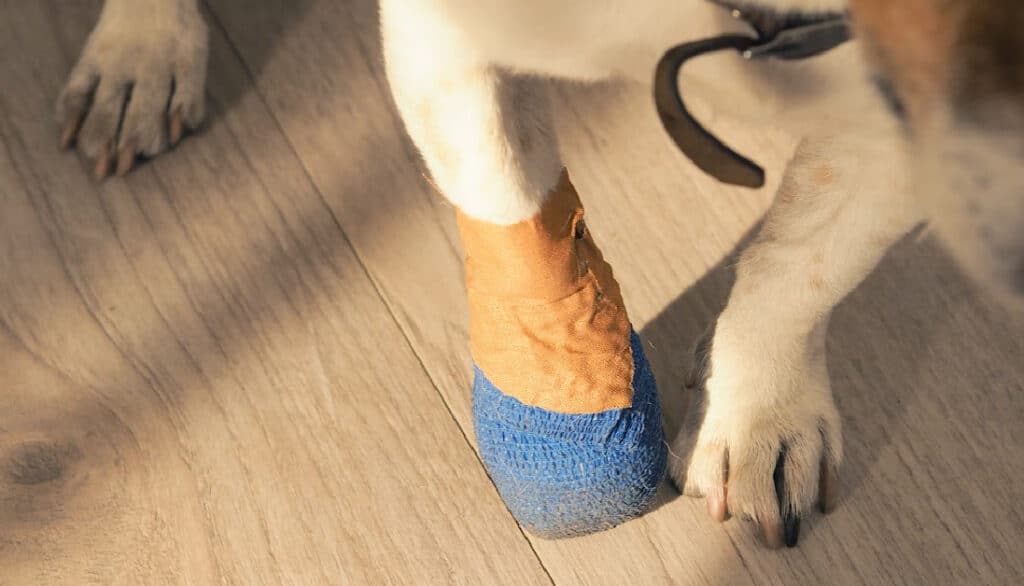
Joint & Bone Stress
The fallout from an altered posture doesn’t stop at the feet. With prolonged nail lengths forcing dogs to walk abnormally, there’s added stress on their joints and bones. This strain can be especially concerning for senior dogs or breeds that are naturally predisposed to joint issues.
The Threat of Nails Curving Into Paw Pads
One of the more cringe-worthy consequences of neglecting nail length is the possibility of nails, particularly the dewclaws, curving and growing into the paw pads. Not only is this painfully distressing, but it also poses a risk of infections and additional complications.
In essence, while long nails might seem like a superficial issue, they carry genuine health implications for our furry friends. Recognizing the importance of regular nail trims can make all the difference in ensuring our dogs prance about comfortably and healthily.
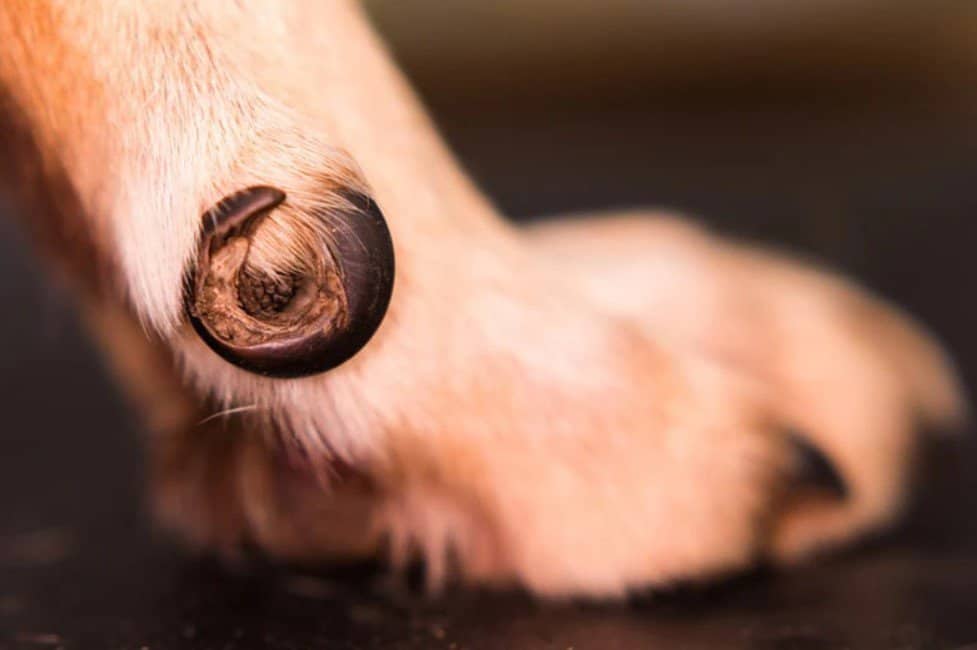
Signs Your Dog Might Be Experiencing Pain from Long Nails
Every dog expresses discomfort differently, but there are common signs that can indicate your pup might be in pain due to their long nails. Here’s what to keep an eye out for:
Limping or Favoring a Paw
If your dog suddenly starts limping or avoids putting weight on one of their paws, it could be because a long nail is causing discomfort. It’s even more suspicious if there’s no apparent injury or foreign object in their paw.
Reluctance to Walk or Play
Dogs typically have a zest for life, and if you notice a sudden decline in their enthusiasm for walks or play, their nails might be the culprits. Experiencing pain every step of the way can quickly dampen their spirits.
Clicking Sound on Hard Surfaces
While this might not indicate pain per se, a consistent clicking sound when your dog walks on hard surfaces like tiles or hardwood often means their nails are too long. It’s a clear cue for a nail check!
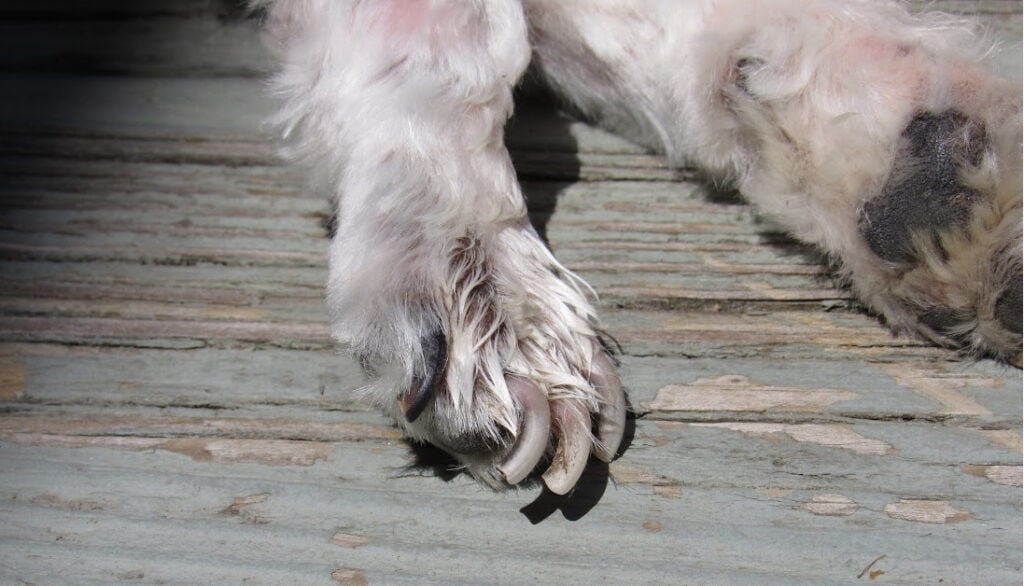
Overlicking or Biting at Their Paws
Dogs will often try to soothe discomfort by licking or biting the affected area. If your pet is incessantly attending to their paws, it could be a sign that long nails are causing irritation or pain.
Visible Curvature or Twist in the Nails
If you can see that one or more of your dog’s nails are curving sideways or starting to twist, it’s a clear sign they’ve grown too long. Such deformities can press into the paw pads, leading to pain and potential infections.
While some of these signs can stem from other issues, it’s essential to regularly check and maintain your dog’s nails. Not only will you prevent potential pain and complications, but you’ll also ensure your furry friend is comfortable and happy trotting beside you.
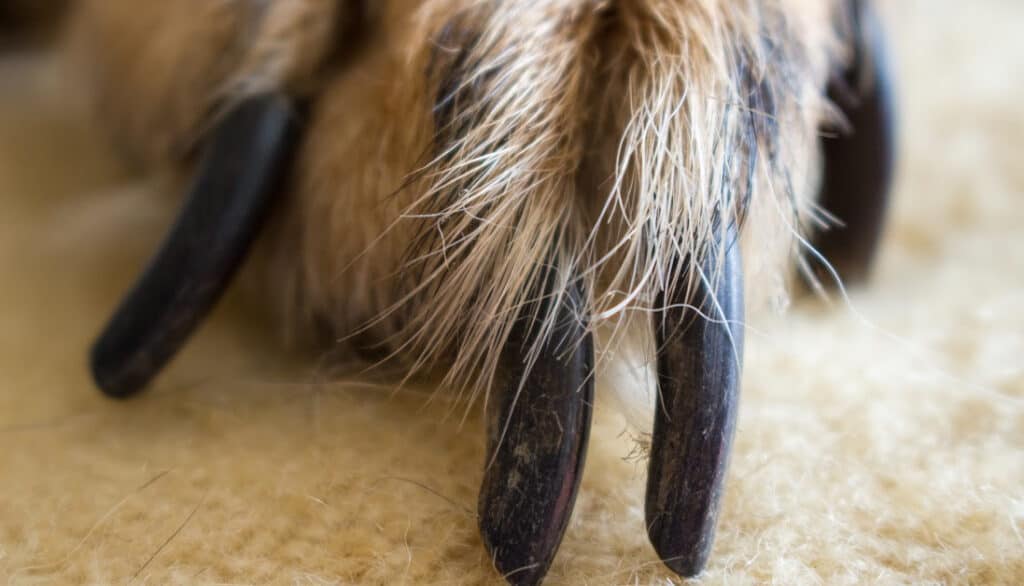
The Proper Length for Dog Nails
Keeping our dogs comfortable and injury-free often comes down to understanding and maintaining the right nail length. But what is the “proper” length, and how can we determine it? Let’s delve into some guidelines and tips.
No Contact with the Ground
A straightforward rule of thumb (or should we say “paw”?) is that when your dog stands on a flat surface, their nails shouldn’t touch the ground. If you hear a clicking sound when they walk on hard surfaces, it’s a sign the nails are too long.
Look for a Natural Curve
While each dog’s nails are different, a naturally occurring curve without any extreme twists or bends is a good indicator of healthy nail length. When nails get too long, they often start to curl, which can lead to potential pain and injury.
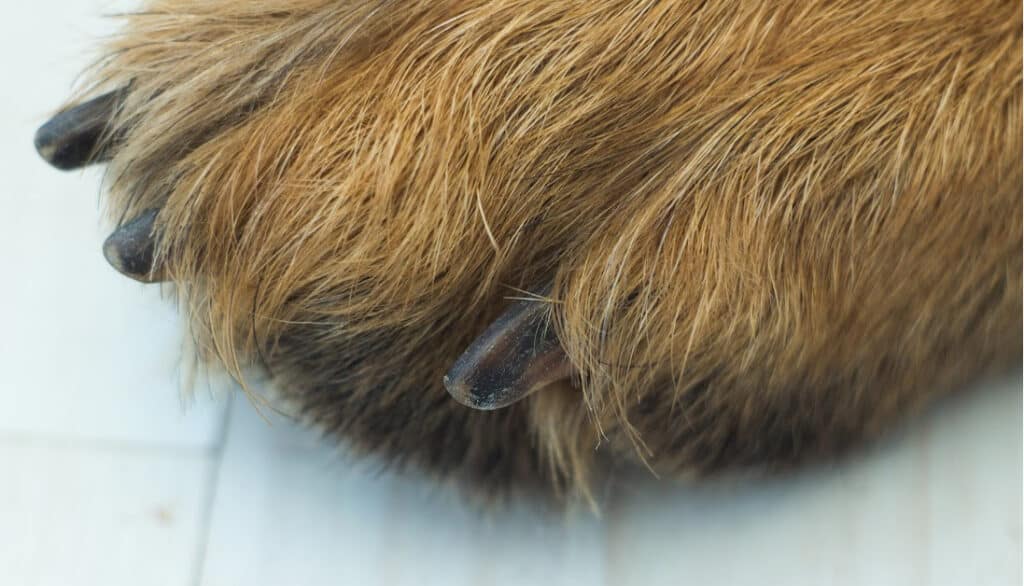
Different Breeds, Different Needs
It’s worth noting that different breeds and even individual dogs might have varying nail growth rates and structures. Breeds with more robust paws might naturally have slightly longer nails that don’t cause discomfort, while smaller breeds may require more frequent trims.
Consistent Trimming is Key
Instead of aiming for a specific length, a more practical approach is to engage in regular nail trims. Keeping the nails at a consistent, comfortable length reduces the risk of overcutting or causing pain.
When in Doubt, Consult a Professional
If you’re ever unsure about the correct nail length or feel uncomfortable trimming your dog’s nails, it’s always best to consult a professional groomer or veterinarian. They can offer guidance tailored to your specific dog and ensure that the nails are kept at a healthy length.
Remember, the ultimate goal is to ensure our dogs are comfortable and free from any potential nail-related discomfort. Regular checks and maintenance, combined with understanding the right nail length for your specific pup, will go a long way in ensuring their paws stay in tip-top shape!
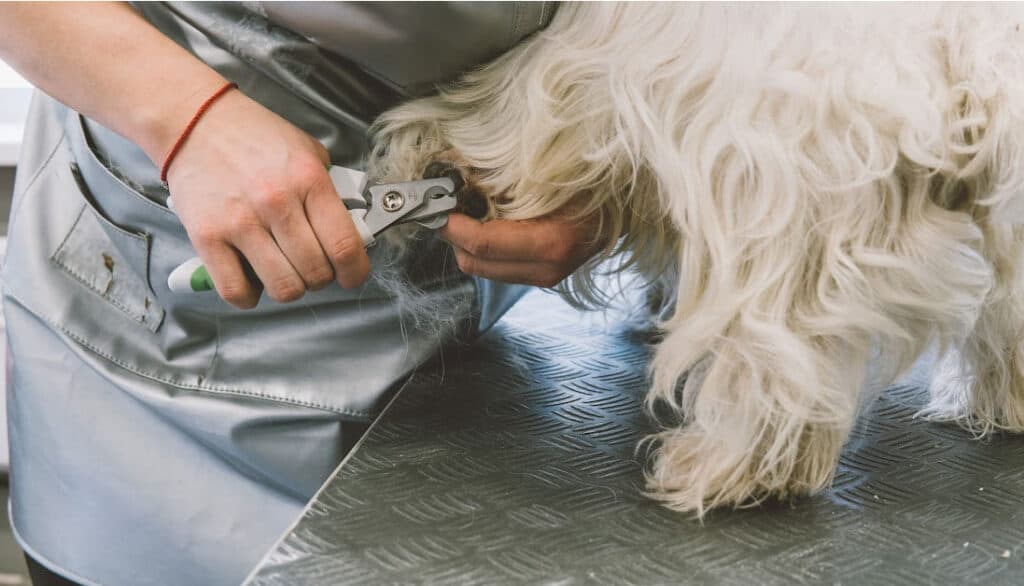
Tips for Maintaining Your Dog’s Nail Health
Maintaining healthy nails for your dog doesn’t just end with knowing the proper length. It’s an ongoing commitment that requires attention to detail, regular care, and sometimes a bit of patience. Here are some essential tips to help you ensure your canine companion’s nails remain in optimal condition:
Start Young
If you have a puppy or a younger dog, it’s the best time to introduce them to nail trims. The earlier they become accustomed to the routine, the less stressful it will be for both of you as they grow.
Regular Trimming is Essential
Don’t wait for the nails to become visibly long. Set a regular schedule for nail trims, be it every couple of weeks or once a month, depending on your dog’s nail growth rate.
Invest in Quality Tools
Using the right tools can make a huge difference. Ensure you have a pair of sharp, quality nail clippers or grinders specifically designed for dogs. Dull tools can cause splits or cracks, leading to discomfort.
Mind the Quick
Be cautious not to cut into the quick. If your dog has translucent nails, you can usually spot the quick as a pinkish section. For dogs with darker nails, trim a little bit at a time and look for a small white dot in the center, indicating you’re getting close to the quick.
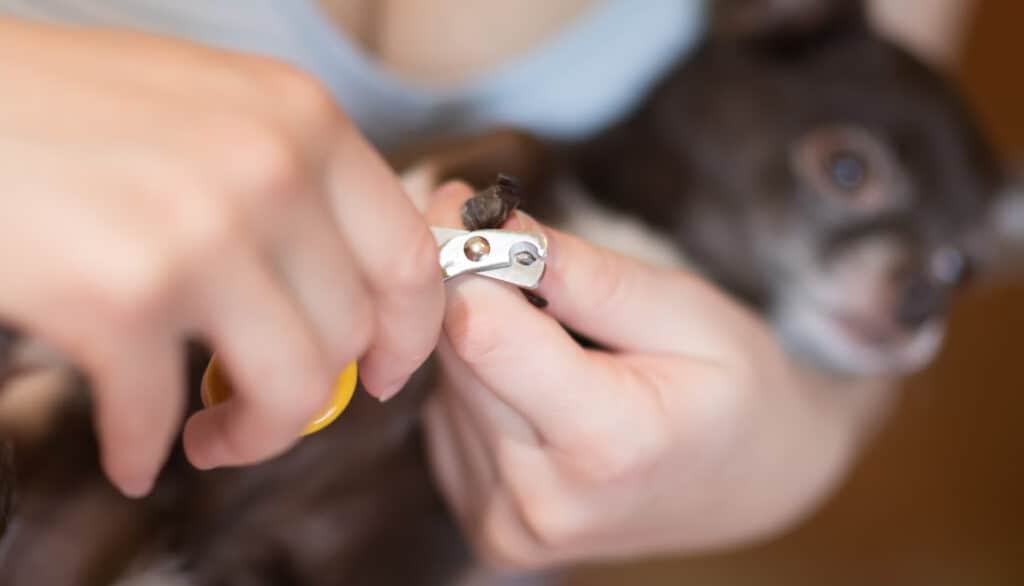
Stay Calm and Offer Treats
Your demeanor can influence your dog’s behavior. Stay calm and positive during nail trims, rewarding them with treats and praises afterward. This positive reinforcement can make future trims much more manageable.
Consider Natural Abrasion
Taking your dog for walks on concrete or pavement can naturally help wear down their nails. However, it shouldn’t replace regular trims, but rather complement the process.
Check the Dewclaws
Don’t forget about the dewclaws! These “thumb” nails don’t always wear down naturally and can grow into the paw if left unchecked.
Seek Professional Help When Needed
If you’re uncomfortable or uncertain about trimming your dog’s nails, seek out the expertise of a professional groomer or veterinarian. They can also provide insights and tips tailored to your dog’s specific needs.
Nail care is an integral part of overall dog health and well-being. By dedicating time and care to your dog’s nails, you not only prevent potential discomfort and injury but also contribute to their overall happiness and longevity.
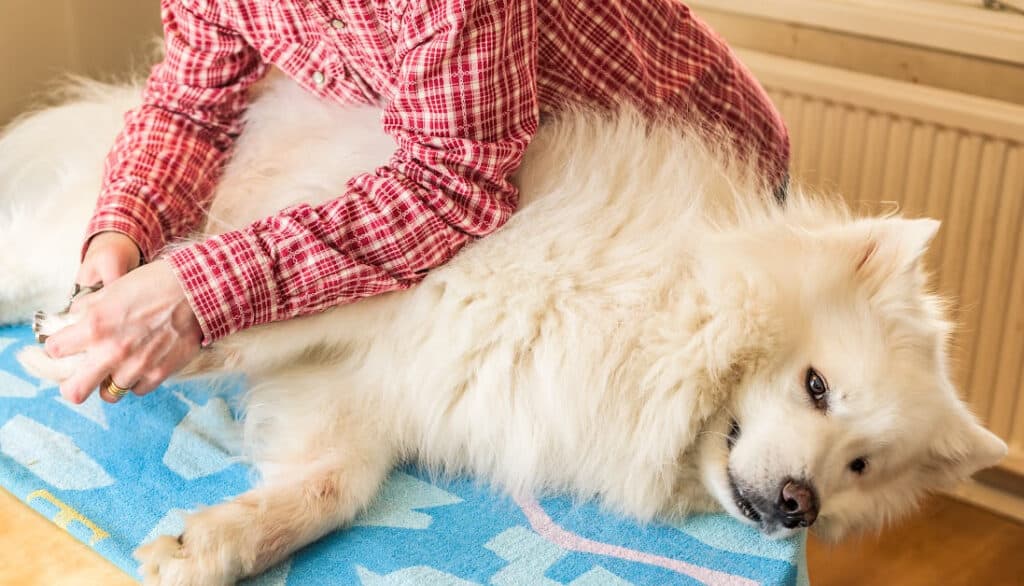
Special Considerations for Aging Dogs or Dogs with Health Issues
As our loyal companions age or face health challenges, their nail care needs can evolve. Aging dogs and those with specific health issues often require special attention to ensure their nails, paws, and overall well-being are maintained. Here’s what you need to know:
Joint Pain and Arthritis
Older dogs often struggle with joint pain or arthritis, making the consequences of long nails even more pronounced. Improper posture due to long nails can exacerbate joint discomfort, making regular trims even more crucial.
Reduced Activity Levels
Aging dogs or those with health issues might not be as active as they once were. Reduced activity means less natural wear on their nails, potentially leading to quicker nail growth and a greater need for frequent trims.
Brittle Nails
Just like in humans, an older dog’s nails can become more brittle, leading to splits and breaks. Using sharp, quality tools and being gentle during trimming can help mitigate the risk of damage.
Altered Sensitivity
Health issues can sometimes affect a dog’s sensitivity. They may become more sensitive to touch due to conditions like diabetes, making nail trims potentially more stressful. Always be gentle and observant, adjusting your approach based on their reactions.
Medications and Nail Growth
Some medications can influence nail growth rates or nail quality. If your dog is on medication, regularly check their nails and adjust your trimming routine as needed.

Vision and Hearing Impairments
Dogs with reduced vision or hearing might be more startled during nail trims. Approach them gently, ensuring they’re aware of your presence. Keeping the environment calm and predictable can be beneficial.
Seek Veterinary Advice
If your dog has health issues or is aging, it’s essential to stay in close communication with your vet. They can offer tailored advice, suggesting the best nail care routine or any special considerations for your specific dog.
In essence, as our dogs age or face health challenges, their nail care needs don’t diminish—they often become more critical. Understanding and adapting to these special considerations can ensure your furry friend remains comfortable and healthy in their golden years or as they navigate health challenges.

Conclusion
Caring for our furry companions extends beyond playtimes, cuddles, and nutritious meals. The seemingly small task of maintaining their nails holds a significant place in their overall well-being. As we’ve explored, nail health impacts everything from posture and mobility to comfort and injury prevention.
For first-time dog owners, the intricacies of nail care might seem daunting. Yet, with patience, education, and a bit of practice, it becomes just another way we show our pets love and care. Whether you’re handling nail trims at home or trusting a professional, the goal remains the same: ensuring our dogs lead a life free of nail-induced discomfort.
In the journey of pet ownership, it’s often the small gestures – a treat after a nail trim, a gentle pet during a grooming session, or a vigilant check for signs of discomfort – that solidify the bond between human and pet. Here’s to countless days of hearing the joyful, pain-free patter of dog paws, as we navigate the path of canine care together.
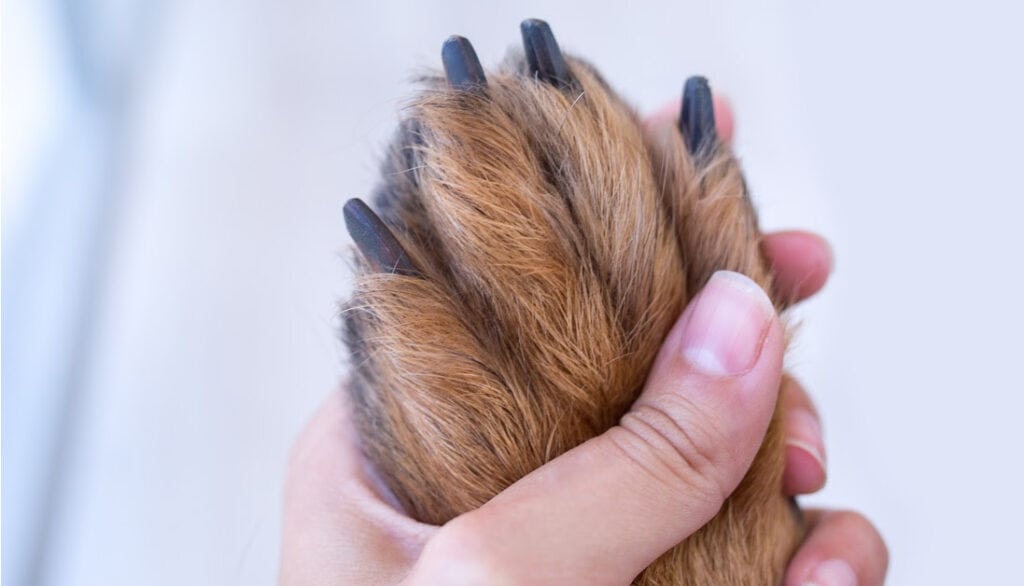
Frequently Asked Questions
Answer: The frequency of nail trims varies depending on your dog’s activity level, breed, age, and the surface they regularly walk on. Generally, a good rule is to trim or check their nails every 2-4 weeks. However, always pay attention to signs of overgrowth or discomfort in between scheduled trims.
Answer: If you accidentally cut the quick, don’t panic. It might bleed and be a bit painful for your dog. Apply styptic powder or a styptic pencil, if available, to stop the bleeding. If you don’t have these on hand, applying gentle pressure with a clean cloth can also help. Make sure to soothe and comfort your dog, and keep an eye out for any signs of infection.
Answer: It’s not uncommon for dogs to fear nail trims. Start by creating a calm environment. Introduce the nail clippers gradually, rewarding your dog for calm behavior. You might need to do this over multiple sessions. Also, consider consulting a professional groomer or vet who can use specialized techniques or even mild sedation if absolutely necessary.
Answer: While it’s technically possible, it’s not advisable. Dog nails are much thicker and tougher than human nails. Using dog-specific nail clippers or grinders ensures a clean, safe cut that’s suitable for the shape and size of your dog’s nails.
Answer: Nail growth can be influenced by various factors, including breed, age, diet, health, genetics, and activity level. If you notice a sudden change in nail growth rate or have concerns, it’s always a good idea to consult with a veterinarian to rule out any underlying health issues.
